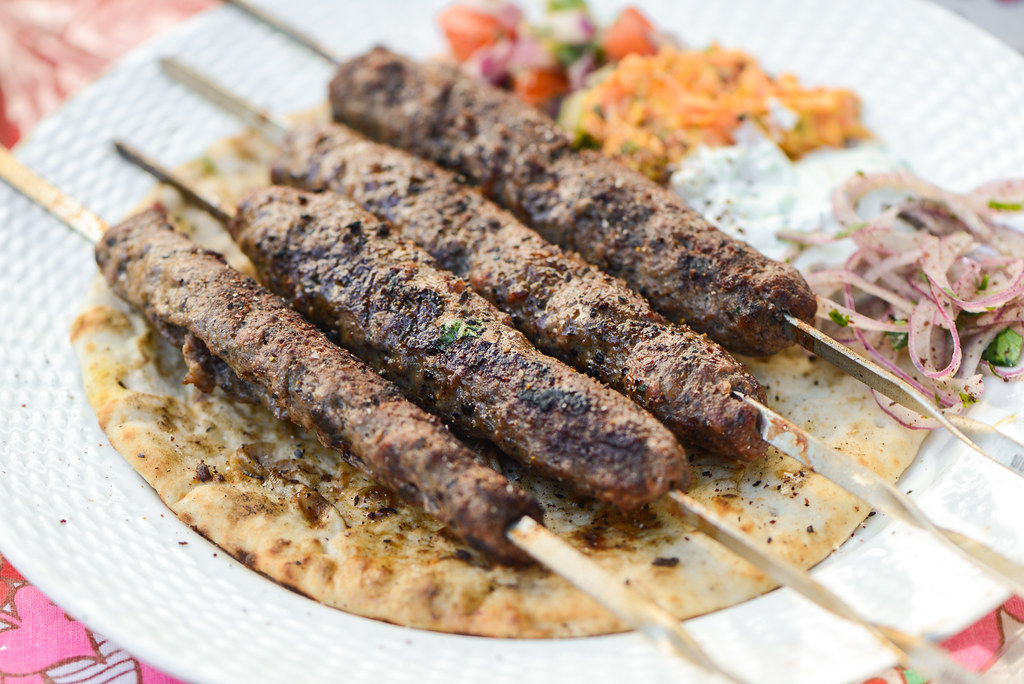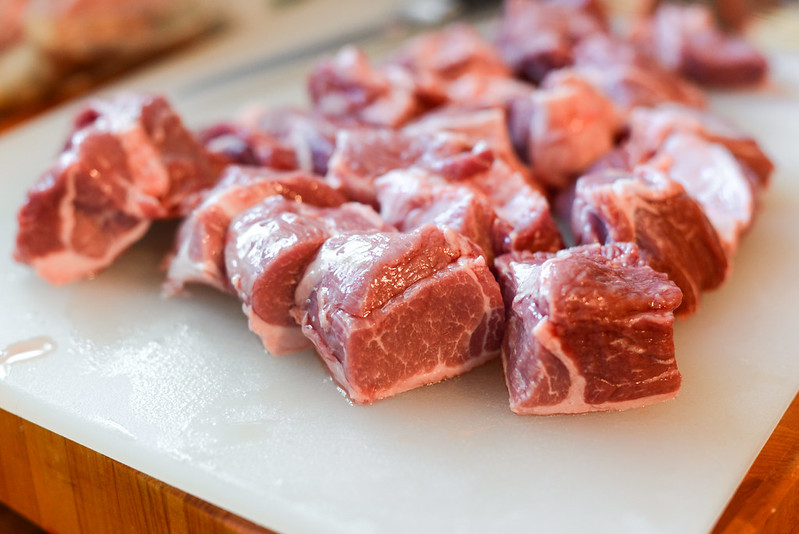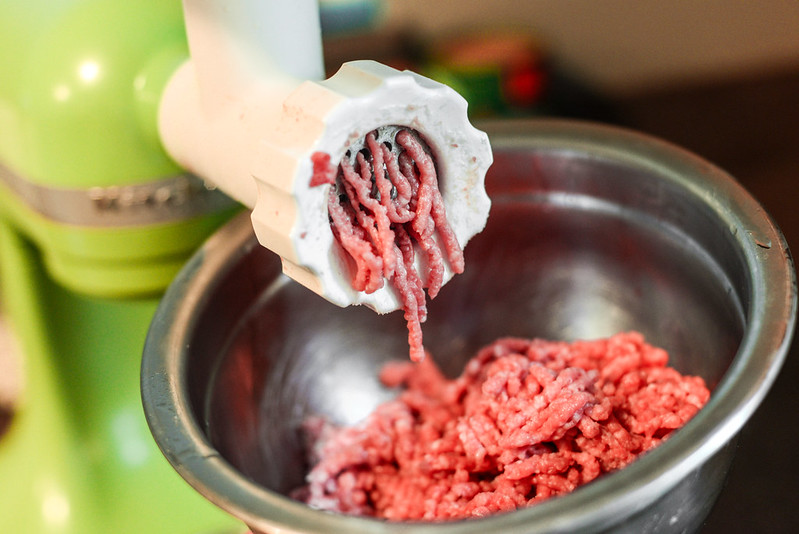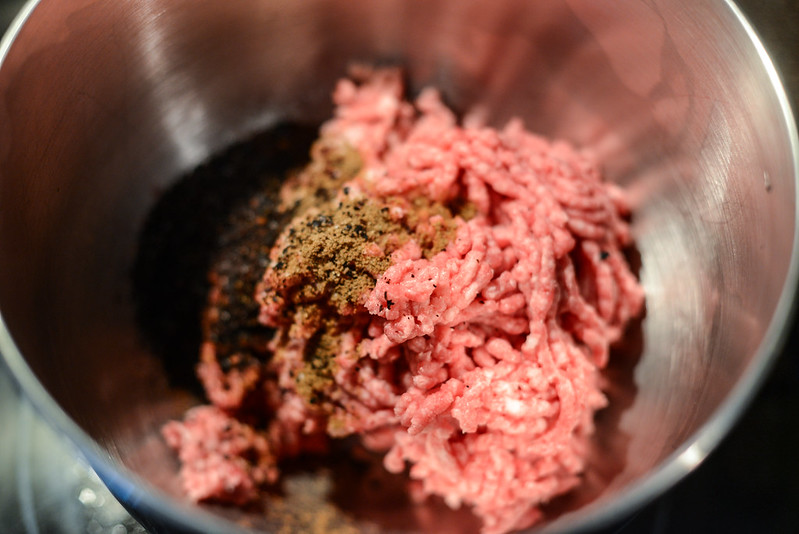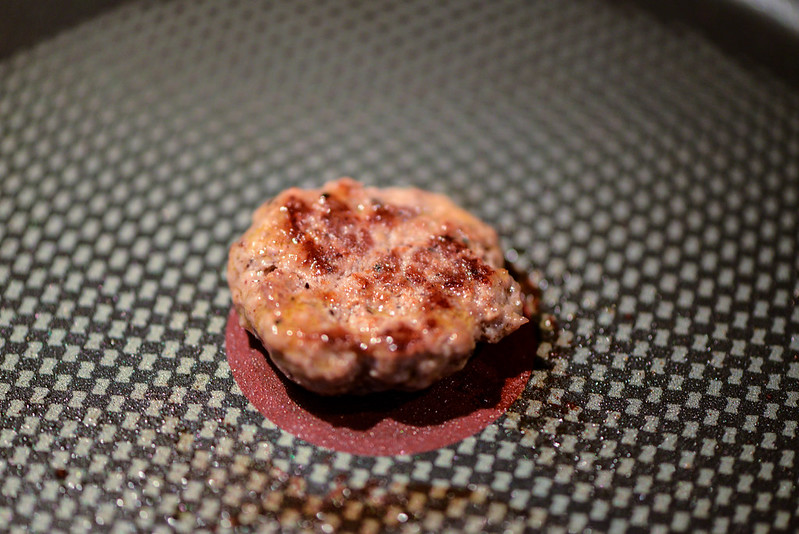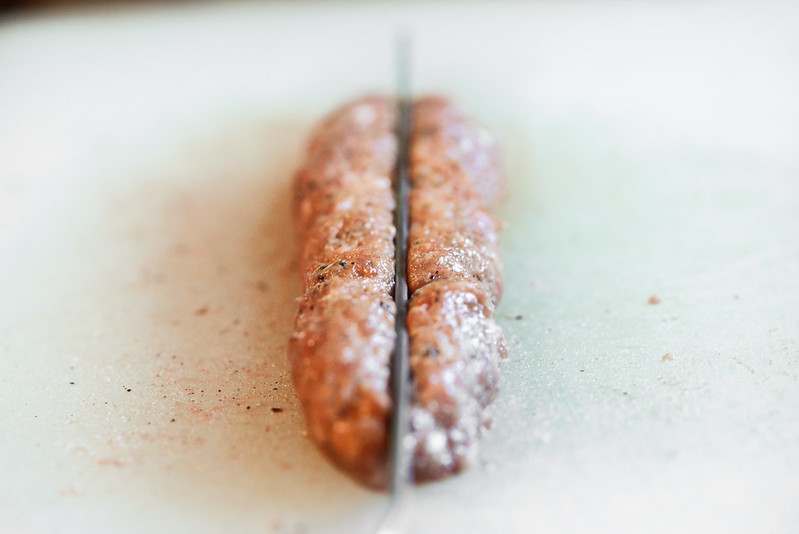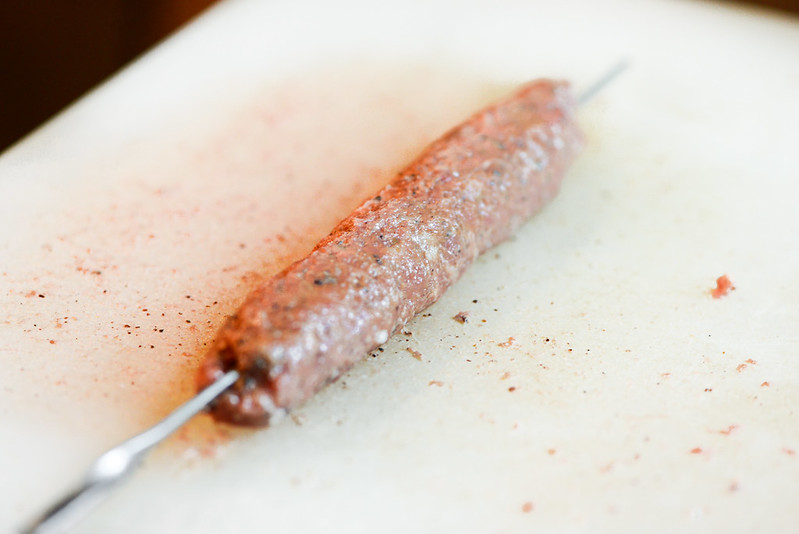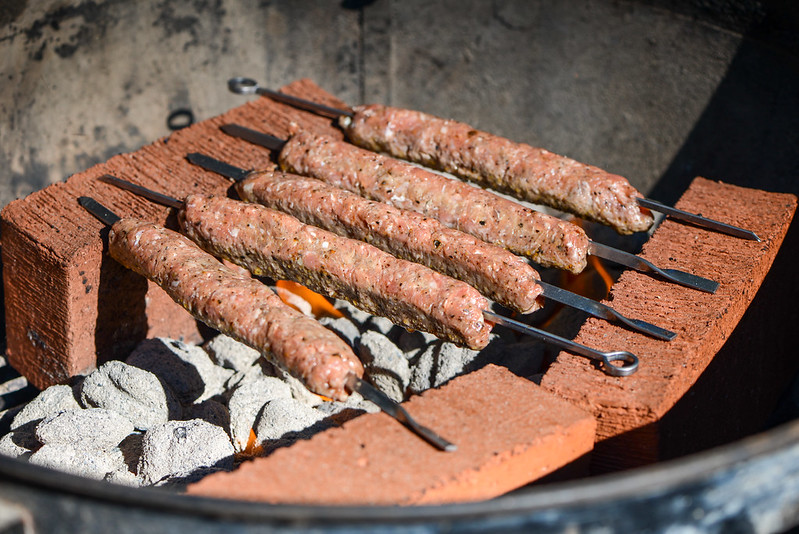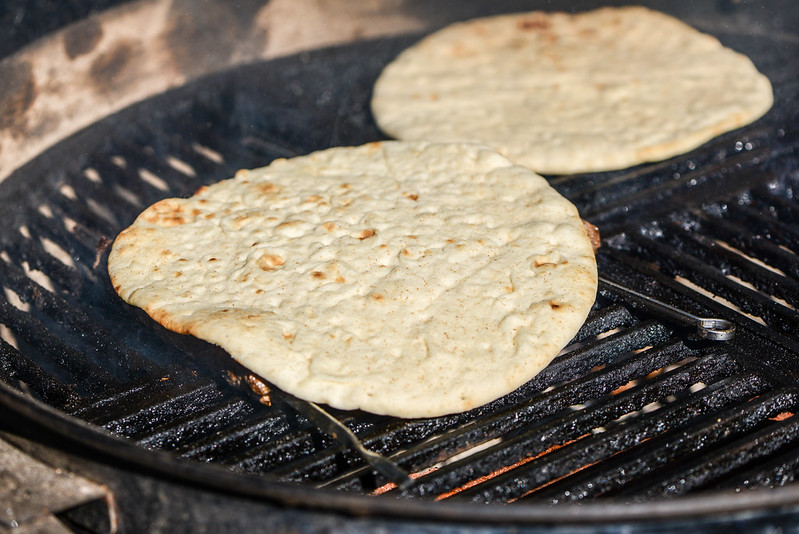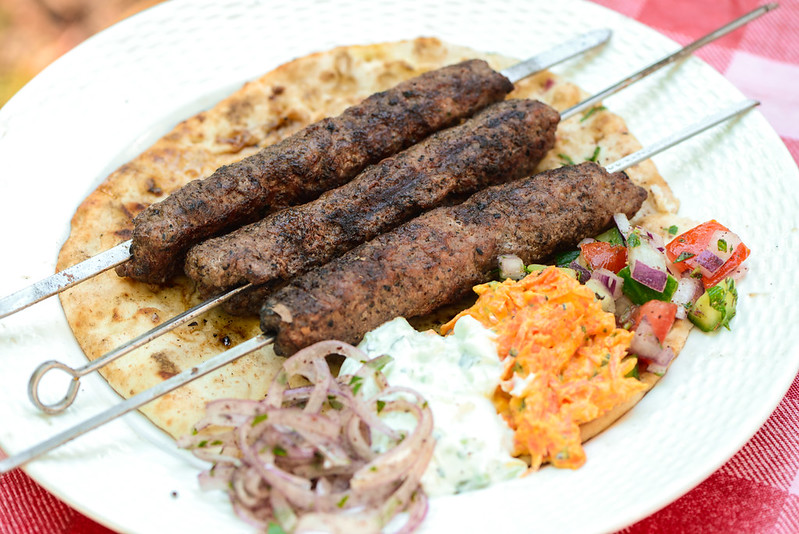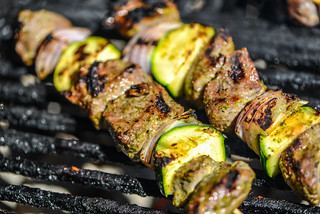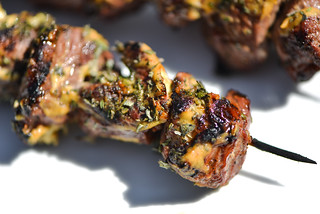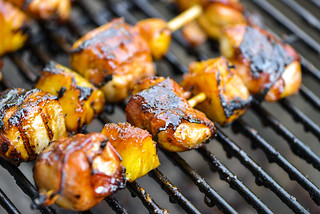Adana Kebabs
A couple weeks ago, the early spring weather and approaching Easter holiday got me in the mood for lamb, which lead to some seasonally appropriate yogurt- and mint-marinated lamb skewers. Those were mighty fine, but if you asked me what the most delicious lamb creation I grilled over the past year was, there's no doubt that these Turkish Adana kebabs took the cake.
I would say that for most sausage and meatball recipes, you want to go with fatty meats because: a) it producers tastier end results and b) the extra fat helps keep the whole thing juicy. When it comes to lamb, I've always relied on lamb shoulder to get me that ideal meat-to-fat ratio, but I didn't realize how lucky I had it back in Astoria that I can go into any butcher and procure a lamb shoulder with ease. Down here in Durham, shoulder doesn't seem to be an oft carried item, and while I'm sure I could order one and get it in a day or two, I decided to pick up a leg of lamb instead and added in cubes of pork fatback to make up the missing fat I would have gotten from a shoulder.
While I'm a fan of grinding my own meat, it's totally not a necessary step. It's certainly easier to just pick out your cut and have your butcher grind it for you, but I get a sense of satisfaction from breaking down a large chunk of meat and then sending it through the grinder. If you do grind at home, it's best to grind all the meat and fat first through a large cutting die, then sending the mixture back through using a finer die. The double grind helps distribute the fat more evenly, which was something I was aiming to do with these Adana kebabs.
For what became very well spiced kebabs, the actually seasoning that went into them was pretty minimal. I got the original recipe from Kenji over at Serious Eats, and he put a lot of emphasis on needing the exact spices to get the perfectly flavored Adana kebabs. This required me to buy both the slightly sweet and smoky Turkish Urfa pepper flakes and lemon-y sumac online. These two, along with toasted and ground cumin, formed the trio of spices that flavored the kebabs—the only other seasoning to go in was salt.
With the meat and seasonings in place, I went ahead and worked the mixture in my KitchenAid. To achieve a cohesive, semi-fine texture, I first mixed the meat at low-speed for a minute, then added ice cold water and let the mixture go at medium-low speed until it was homogeneous and had a sticky look and feeling. Short a standing mixer, you can do this by kneading the meat by hand.
Next, before committing to skewering, I broke off a piece of the meat mixture, formed it into a patty, and cooked it up in a skillet. This let me confirm that the meat was seasoned well and had the semi-fine, lightly springy texture I was after.
With the confidence that the meat was pretty perfect, I ventured forth with the skewering. I did this by breaking off piece of ground lamb roughly 1 1/2 ounces in weight and rolling it out into a long cylinder on a cutting board.
I pressed my skewer into the meat and then pinched the seam closed and rolled the kebab on the board again to even it. I repeated this with the rest of the meat mixture, which ended up creating ten kebabs.
I actually bought new skewers just for this application. I wanted to try to grill these Trukish style—resting the skewers on raised racks (bricks in my case) with coals scattered between (no grilling grates). This required me to get longer, fatter skewers than I owned. The length ended up being good, but the width was still too narrow and after a couple minutes of cooking, the meat on one of my skewers started to sag and finally fell off completely.
While the others seemed to be ok, I didn't want to risk losing anymore, so I put the grilling rack in place and finished them with the added security the grates afford. It took about eight minutes total for me to get well seared kebabs paired with meat that was cooked all the way through without being overdone.
In the last couple minutes of cooking, I rested pieces of pita on top of the kebabs and let it warm through until it was soft and pliable.
Then I moved the pita to a plate, placed the kebabs on top, and added spoonfuls of various Turkish salads—red onion and sumac, yogurt and cucumber, carrot and yogurt, and cucumber, red onion, and tomato. Before serving, I gave each of the kebabs an extra dusting of the spice mixture, which I had set aside earlier.
You'll be hard pressed to find a tastier lamb concoction with so few ingredients. The spices enhanced the already flavorful lamb with a mixture of earthy, smoky, spicy, and lemon-y spice. It was a complex, yet incredibly cohesive pairing that made these Adana kebabs a great treat. Sure they're not the most spring-like or Easter-appropriate incarnation of lamb out there, but they're certainly tastier than the common holiday lambs I've come across.
